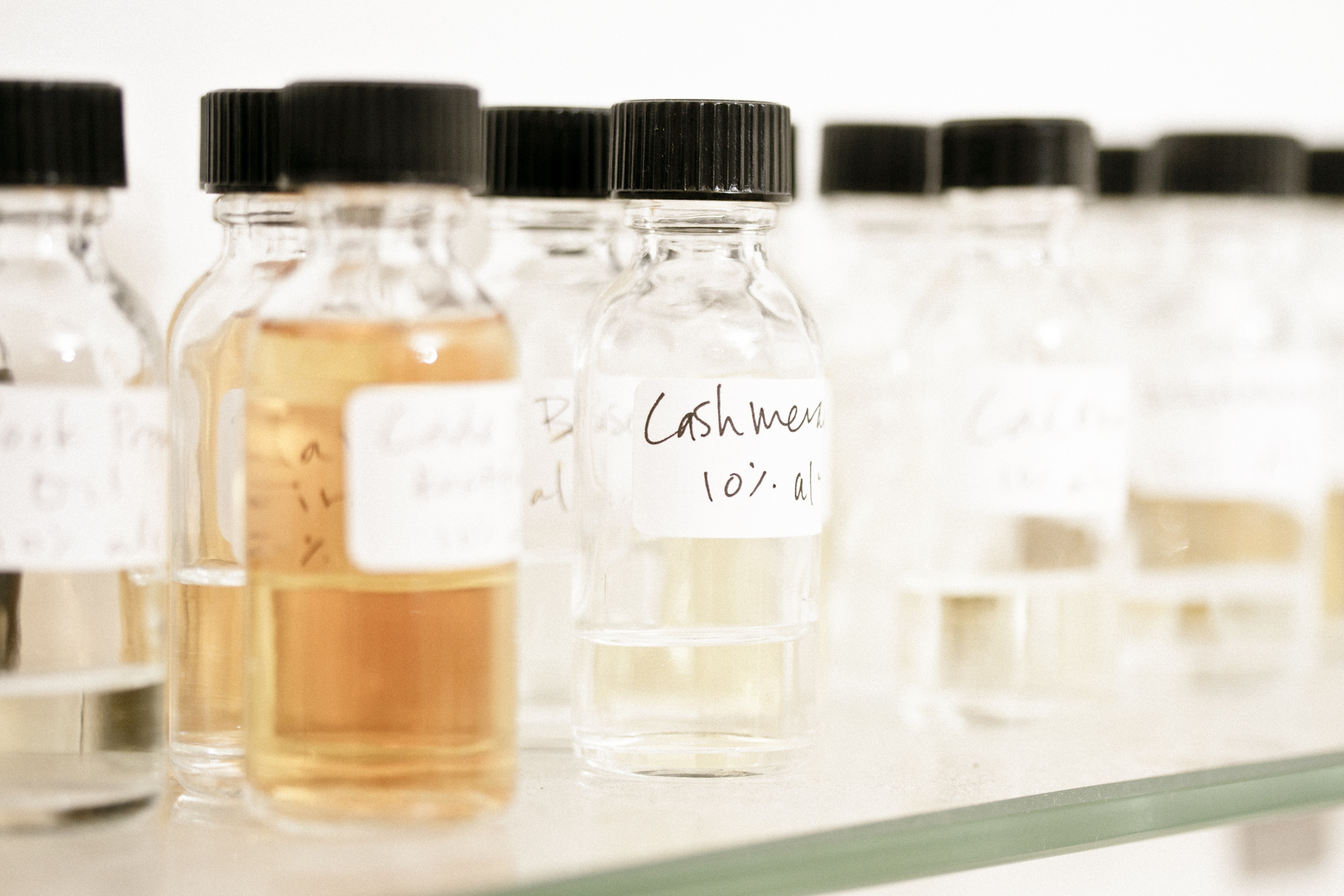perfumery lesson #2: a basic laboratory

When I first got started in perfumery, I set up a mini makeshift lab at home. I really didn't know what I was doing so I guessed at a lot of things. It makes me smile to think back on those days - for the most part my intuition was pretty good. But there were also some big mistakes I was making. What follows is a list of a few tools needed for setting up your own simple lab at home so that with just a few easily found things, you can start dabbling in perfume! Some of these might not make total sense yet - that's okay. Soon I'll do a lesson on a creating a basic mixture and this equipment will come into play.
Pipettes / Though it's not the most environmentally friendly option, I do recommend disposable plastic pipettes. You'll use these when you're mixing a formula. Use one pipette per ingredient. Dipping into one ingredient and then using the same equipment for another will contaminate what are really delicate pure raw materials.
Digital scale / Digital scales are not very expensive and way more accurate than counting drops. I recommend one that has a readability of 0.01g for when you want to be really precise. Ohaus is a reputable brand and is available through Lab-Depot.
Perfumer's Alcohol / Perfumer's Alcohol is very high proof - 190 or 200 proof to be exact. This will give your formula the greatest clarity of scent, and help to preserve it. Though you'll need a special permit to purchase large amounts, Save on Scents offers Perfumer's Alcohol at a reasonable price for the hobbyist.
Glass bottles / Each mixture that you make should be contained in a fresh and brand new glass bottle. For practice, I use clear 1 oz bottles like the ones offered at SKS.
Fragrance strips / To test each fragrance you make.
Raw Materials / This is the technical term for ingredients. I believe there are about 1,500 raw materials potentially available to the perfumer. Gathering ingredients to play with represents the biggest investment into perfume. I recommend starting with 20 ingredients, then building to 50, then 100, then 300, and eventually 500. Don't worry though, as you can take this at your own pace. 20 ingredients is more than enough to start a complex mixture, and anyway, you'll really want to memorize these scents as you go along.
There are natural and synthetic raw materials. Natural ingredients can be steam distilled (essential oils), hexane extracted (absolutes) or CO2 extractions. Synthetic materials can be found originally in nature, or made entirely in a laboratory. Natural materials can be cheap (sweet orange essential oil) or expensive (Bulgarian rose absolute). Same with synthetics.
For your first 20 ingredients, try to think across the olfactive families - meaning choose from florals, spices, green notes, musk, aquatic. Peruse the natural raw materials at Liberty Natural or Eden Botanicals and see what suits your fancy.
Photograph by Robert Brevdad
- Tags: PERFUMERY LESSONS

